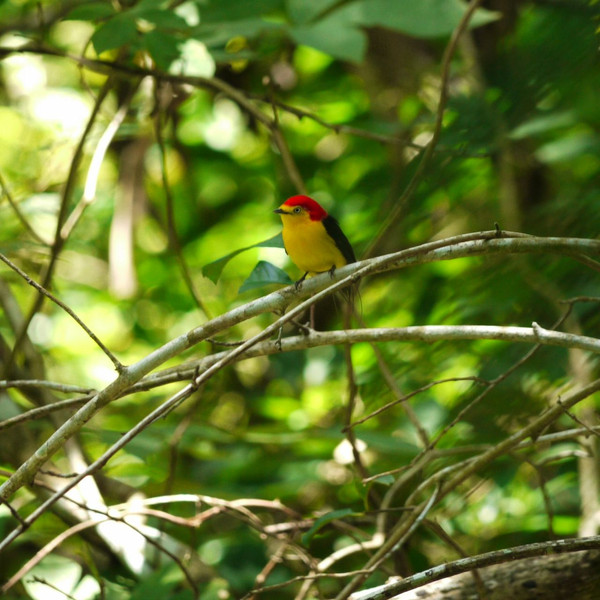George (second from left) at El Paujil
Colombia's Hidden Highlights
Colombia is steadily blossoming into one of the world’s great wildlife-watching destinations. Over the last 15 years, Colombia has returned to a stable democracy, shaking off its negative stereotypes to fully embrace foreign visitors. The country is absolutely bursting with biodiversity, and it is equally full of hospitable folk, who pride themselves on living in ‘the most welcoming country on Earth’. Colombia’s astonishingly varied geography gives rise to five distinct ecological zones (the Andean, the Orinoco, the Pacific Chocó, the Amazon and the Caribbean region), each of which offers unique microhabitats that reveal unmatched ecological diversity. Pristine and previously unexplored areas of wildlife habitat are continually opening up for business, which presents extremely exciting opportunities for us, as nature aficionados.
I joined the tailormade team at Naturetrek over this past summer, and recently returned from a 2-week reconnaissance trip, predominantly focusing on the Llanos (Orinoco region) and Magdalena Valley (Andean region), as well as a short visit to Manizales (Central Andes) and the Caribbean coast. Over the course of my time in the country, I met with local ground agents, investigated new lodging options, and managed to record nearly 200 species of bird and 20 species of (non-flying) mammal.
We kicked off the journey with a visit to the La Florida Wetlands, located a short drive to the outskirts of Bogotá. This gave us an opportunity to bird for the elusive and endemic Bogotá Rail. In addition to the Rail, we saw a good variety of waterbirds, and the much wanted Silvery-throated Spinetail – a local speciality. Brazilian Cavy seemed to be fairly abundant in the reserve, and this gave us our first mammal sighting of the trip.

The main bulk of our trip was spent in the Magdalena Valley; a special region, full of endemism and threatened species. While birding in the little-known Bellavista Reserve, we managed to see all four regional species of Manakin in just two hours (Golden-headed, White-bibbed, White-bearded and Striolated). The morning also produced several other target species including Yellow-tufted Dacnis and King Vulture, as well as the highly endemic Sooty-ant Tanager and White-mantled Barbet. In Rio Claro Reserve, we had our first mega-endemic mammal, when we spotted a playful troop of Silvery-brown Bare-faced Tamarin close to the park entrance. A night-walk later that day produced Grey-handed Night Monkey, several Brown-eared Woolly Opossum and plenty of interesting insects and amphibians. We made our final major stop at El Paujil Reserve, a privately protected segment of luscious lowland Magdalena forest. Blue-billed Curassow (the reserve’s flagship species) was easy to see here, but we had primarily come for the primates, of which we saw four species in one marvellous morning. This is probably the best place in the world to see the critically endangered and sparsely distributed Brown Spider Monkey, of which we had two fantastic sightings. The nocturnal wildlife is just as impressive here. On one night-walk in particular, we saw Night Monkey, Kinkajou, three different species of Opossum and a Tayra. We are also convinced that at least one of the Opossum species (Dusky Slender Opossum) had not been described in this region before! More exciting news came when the local ranger told us that he had discovered two baby Spectacled Bear cubs in a remote area of the reserve a few weeks before – this is truly an exciting and underexplored region.
We rounded up the trip on the Caribbean coast, in the lowland forests of Santa Marta. As well as its beaches, Tayrona National Park is famous for its population of the critically endangered Cotton-top Tamarin, and these little charismatic primates are very reliable here. This is also a good spot to see the endemic Santa Marta White-fronted Capuchin, which seemed largely unphased by human visitors. We also encountered a nice variety of avifauna here, including Whooping Mot-Mot, Osprey and Southern Bentbill. Despite the national park’s obvious popularity with visitors, wildlife is never far away; a fact that became blindingly apparent when we found fresh Puma tracks and scratch marks on a tree right next to the main trail!





 Loading search...
Loading search...
